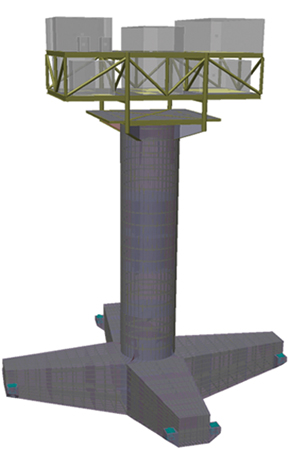 A Minimum Structure Tension Leg Platform Solution
A Minimum Structure Tension Leg Platform SolutionFloating wind farms will be an important contributor to the growth of renewable energy production, giving access to new areas in deep water with high mean wind speeds. To date, floating offshore wind farms have progressed from individual test turbines to small groups of individual turbines near to shore. The next significant advance in floating wind will be pilot projects, expected to be of around 250MW. These will be in deeper water located further from land and will therefore require a substation to step up the voltage for transmission to shore. The challenges of designing a structurally efficient low-motion vessel are greater for the small topside weight and footprint of the electrical equipment for 250MW than they are for a commercial-scale floating substation of 1GW. Different options for the floater design are discussed and compared. A minimum structure tension leg platform was found to provide low motion combined with minimum structural weight.
By Justin Jones, Civil and Structural Group Manager, Petrofac, UK










